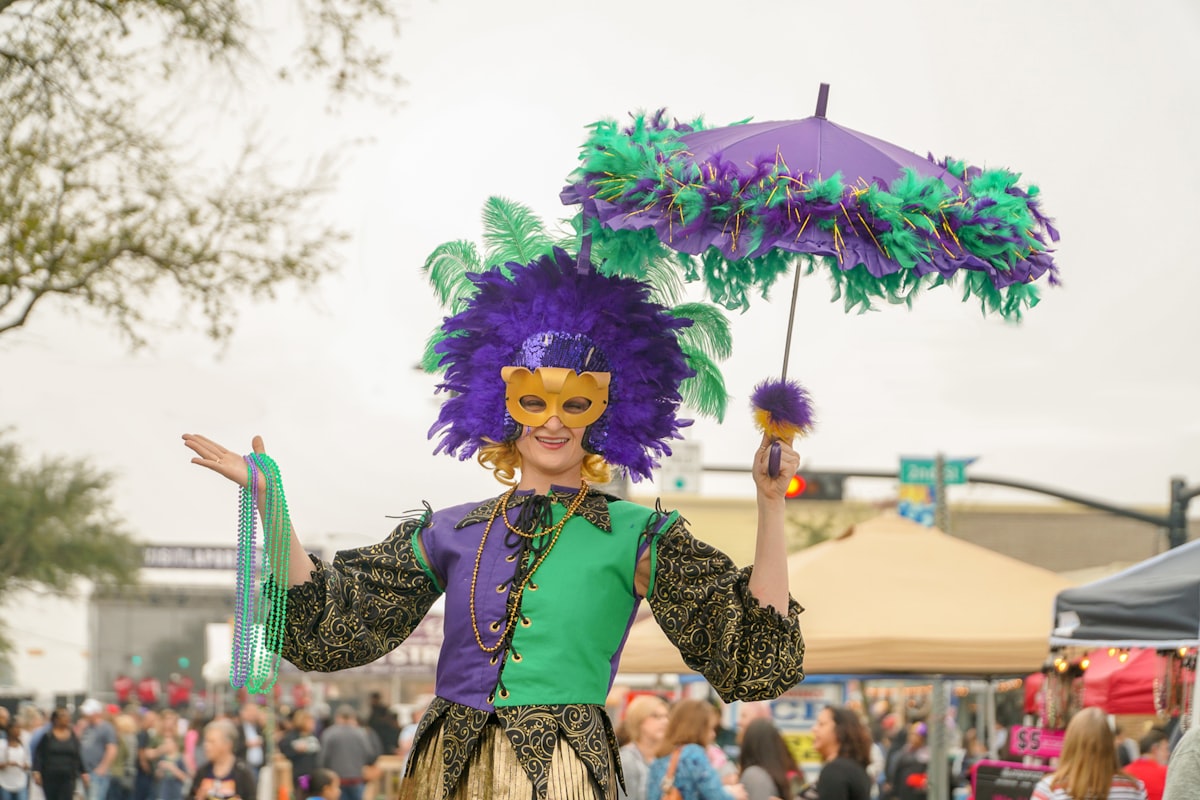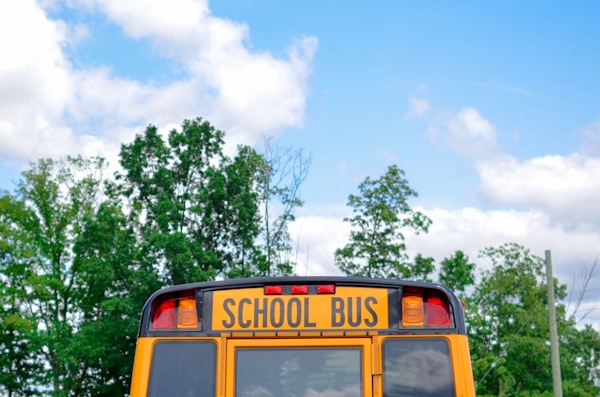An Environmentally Friendly Mardi Gras In Galveston

Laissez les bons temps rouler!
Galveston wraps its Mardi Gras celebrations on February 13, with an estimated attendance of over 350 thousand revelers throwing more than 3 million of the traditional beads at one another. While the raucous partying and parading winds down as more somber Lenten observances begin, students at Ball High School will work to ensure that the plastic beads so often tossed aside as kitschy ephemera don’t clog up landfills and create even more waste.
Mike Gates at Yaga’s Entertainment, the corporation behind Mardi Gras! Galveston, approached Ball High School Life Skills teacher Darren Muren, who runs the Vocational and Work-Based Learning Program, and Incubator (business and entrepreneurship) teacher Rob Lewis in 2022 with a proposal: Would their students like an opportunity to help make Mardi Gras a comparatively greener operation than before? Specifically, for both Life Skills and business students to learn the basics of creativity and commerce at BHS’s Tor (short for “tornado,” the school’s mascot) Store by cleaning, sorting, making art from, and reselling Mardi Gras beads both in-store and online.
Lewis points out that the concept of hiring people with intellectual disabilities to repurpose discarded beads actually dates back to 1953, with the founding of The Arc of Greater New Orleans.
“They have a big business there, and that's where Mike saw it. That's what inspired him, I think, to come to us,” he says.
Beads for Needs sells cleaned beads throughout the year, and recently branched out into involving art students to join their peers in Life Skills and business to make their own unique projects using repurposed beads. Houston-area abstract artist Edgar Medina taught a workshop to some eager BHS students looking to learn about all the different ways they could use beads as a medium for creative expression. Many of the resulting art pieces were subsequently showcased at the Galveston Art Center.
The art students also took part in crafting the donation and storage bins given to the program by the City of Galveston. These get set up both in front of the school throughout the year and at Mardi Gras itself — where Lewis, Murren, and some of their students post up during the festivities — to encourage donations. It takes a lot of collaboration to keep Beads for Needs running, and the more BHS students and teachers step up, the better.
“We are in the process of trying to get as many different clubs and classes and organizations involved as possible,” Murren says.
He and Lewis estimate that, conservatively speaking, they’ve collected about a quarter of a million beads so far — possibly even half a million once this past weekend’s haul is factored in. The first weekend of Mardi Gras! Galveston 2024 alone, they brought home somewhere between 600 to 800 pounds. That’s more than enough to keep participating students busy with the Tor Store for a long while.
“We have probably 150 boxes that we haven't even gotten to sort yet, so we're sitting really pretty for next year,” Murren says. “And then we got a lot of different krewes and organizations that have already told us that they'll donate their leftover beads for Mardi Gras this year, and that they want to work with us next year.”
Lewis agrees that “[they're] just touching the surface, because [they] just have so many people that come up to [them]” hoping to do their part to both support Beads for Needs and keep Galveston’s marine ecosystem as in balance as possible.
Beyond collecting and donating beads, fans can also shop at Tor Store, which launched in 2020. Screen-printed BHS spirit gear is available in addition to the beads and, in future stocks, handmade jewelry and art pieces crafted from donated beads. The Life Skills students make wearables such as t-shirts, sweatshirts, hoodies, slippers, and hats along with merchandise like koozies, stadium seats, and tote bags. Such projects help prepare them for future careers in the arts and retail industries, depending on their interests.
“Four years ago, we got a grant to start an actual business at the school… a business where the Life Skills students and the business students work together,” says Murren. “We make our own merchandise and apparel. We run a school store with food and drink service, like a coffee club for staff members.”
Participating students also receive lessons in how repurposing old materials can make major environmental strides. The United Nations estimates that it can take between 20 to 500 years for plastics to decompose, and even then they aren’t fully absorbed into the surrounding earth — they just shrink down. If 300 million beads get tossed at Mardi Gras! Galveston, that’s an overwhelming amount of plastic waiting to get broken down over what may take nearly half a millennium. Beads can also pose a threat to sea life, who may accidentally get tangled up in or choke on them.
Some Mardi Gras committees and krewes have started pushing for more sustainable celebrations, but adaptation has been slow-going due to the overhead involved.
“I know that some folks in Louisiana, because they've mentioned it to me, are making beads from biodegradable materials. I think the problem is that, right now, the cost point is too high to resell to the public,” Lewis says “But that would be an awesome thing if we could find some materials that we can repurpose into beads rather than making all these plastic beads that we throw. It's tough… We're not in Norway. We’re in Texas. ‘Biodegradable’ might be a four-letter word.”
Murren agrees, “I think it's going to be a slow process to move towards that. Our kids, I think, are much more ecologically inclined… So hopefully we'll see that happen in the next five to ten years where there is some dent being made.”





